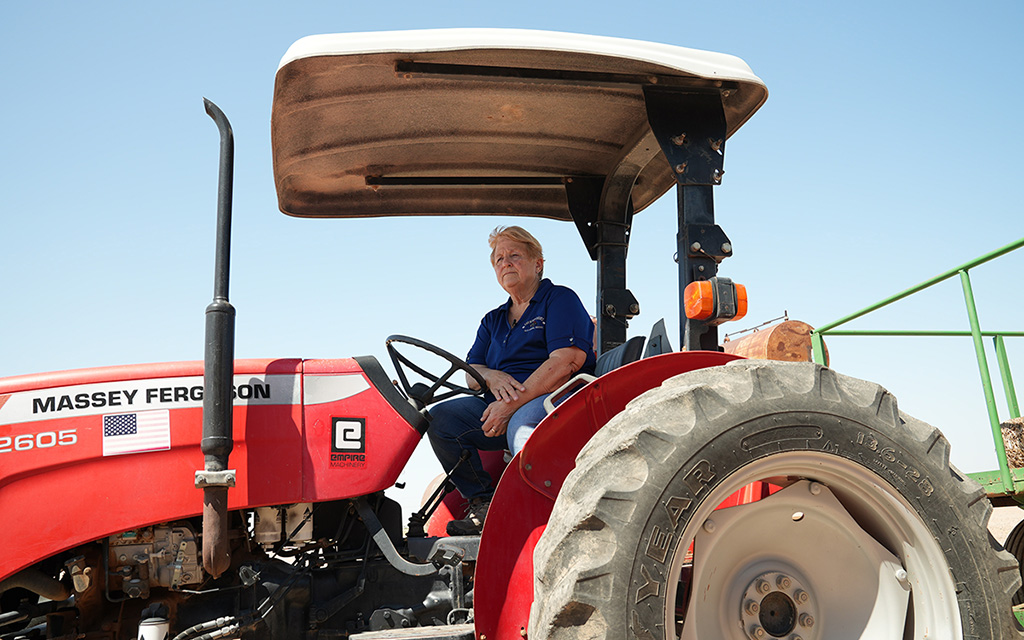TONOPAH – The Central Arizona Project, which delivers Colorado River water to more than 80% of Arizona’s growing population, is taking a three-pronged approach to the megadrought that has resulted in the first water cutbacks to Arizona farmers.
One of those approaches is N-Drip, which converts flood-irrigated fields into a drip system that uses gravity, with no external form of energy. Developed by an Israeli company, the system is being tested to grow sorghum in Australia, sugar cane in Thailand and now cotton and alfalfa in Arizona.
Chuck Cullom, the Colorado River programs manager for the CAP, said managers are focused on water conservation, desalination and recycling as well as irrigation efficiency.
“We’re optimistic that over the next five to 10 years we’ll have a new array of tools to improve the water supply in Arizona,” he said.
That’s a timely prediction, considering the current megadrought. In August, the Bureau of Reclamation declared the first water shortage on the Colorado, prompting mandatory cutbacks next year, with additional reductions expected in 2022.
That has forced farmers across the state to face the reality of our water prospects, Cullom said.
“In 2022, CAP agricultural water users are going to suffer a reduction of about two-thirds of their CAP water supply,” he said.
CAP, which delivers Colorado River water to Maricopa, Pinal and Pima counties, is focused on water conservation, desalination and recycling as well as irrigation efficiency.
“We’re optimistic that over the next five to 10 years we’ll have a new array of tools to improve the water supply in Arizona,” Collum said.
Seth Siegel, N-Drip’s chief sustainability officer, said flood irrigation, which is widely used in Arizona, is “by far, the most water consumptive, wasteful, unsustainable, bad for the world possible use of irrigation.” Switching to N-Drip could save 50% of the water used and increase crop yield, he said, adding that N-Drip already is successful in Israel’s hot and dry climate.
“I’ve been very pleasantly surprised with how well it has worked,” Bill Perry Jr., who’s testing N-Drip on his Tonopah cotton fields, said. “I had very low expectations. I think the crop is better, we have saved water and we have saved on other inputs.”
The final analysis showed water savings of roughly 25% when it was tested on the farm’s cotton fields but no increase in yield, according to Perry Jr.’s father and business partner, Bill Perry. One drawback, he said, is that it may not be cost-effective once the cost of the N-Drip tape is factored in. “If a farmer chose to use N-Drip on cotton, they would spend about $350 per acre to save $140 per acre. That works out to be a $210 per acre loss.” The Tonopah farm is still experimenting with N-Drip on its alfalfa crop.
Siegel noted that another plus is that N-Drip leads to less fertilizer use and reduces farm’s carbon emissions by 60% to 70%.
“Even if tomorrow we would get rain for the rest of our lives, I would argue that you want to convert to a system like N-Drip,” Siegel said.
Cullom, for his part, said he and his team are optimistic that N-Drip could bring one long-term solution to Arizona’s water problem.

